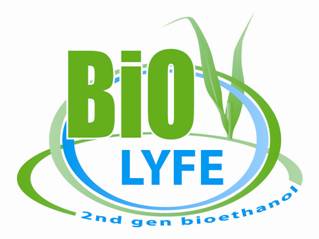|
BIOLYFE: overview of results
The EU-funded BIOLYFE project aims at developing and improving technologies for the hydrolysis of lignocellulosic feedstocks and the fermentation of lignocellulose derived sugars to bioethanol. The final aim is to upscale and integrate these technologies into a complete industrial process for lignocellulosic ethanol production. This process will be demonstrated at industrial scale with an annual production capacity of 40,000 tons of bioethanol in Crescentino, Italy. In order to demonstrate the full value chain, the work in BIOLYFE also includes the development and set-up of efficient feedstock production and logistics systems, as well as the creation of a suitable infrastructure for the marketing and use of the final product.
Feedstock production
In a first step, the most suitable feedstocks for the industrial plant were selected among the following candidate species: Fibre Sorghum (Sorghum sp. hybrids with high cellulose contents), Miscanthus grass (Miscanthus x giganteus hybrid), Giant Reed (Arundo donax), and Switchgrass (Panicum virgatum). Considering the framework conditions found in the target region, as well as general agronomic, logistic, environmental and economic aspects, Giant Reed, wheat straw and Fibre Sorghum were defined as the most suitable crops (see also BIOLYFE newsletter issue 3).
The selection of the right feedstock is critical to the overall project. During the selection, physical-chemical properties (such as carbohydrates content, lignin and ash content, high ethanol/hectare yield and properties after pre-treatment), having an impact on the design and set-up of the production process, were considered.
In addition, data on the economic and environmental sustainability of feedstock production have been collected in cultivation tests at demonstration scale since March 2010. These tests aim at testing and further developing cultivation procedures for optimized biomass yield with minimum fertilization and irrigation input. Another specific aim is to further improve cultivation machineries and biomass logistics.
Giant Reed (Arundo donax) is being cultivated on around 25 ha in Rivalta Scrivia near Tortona, Italy. The activities include the production and transplanting of Arundo rhizomes, the testing of different cultivation scenarios (fertilization and irrigation levels), and the further improvement of machineries for transplanting and harvesting.

Aerial view of the Giant Reed (Arundo donax) cultivation site in Rivalta Scrivia (left); Machinery used for Arundo harvesting (right)
In addition, 25 ha have been prepared for Sorghum cultivation from 2012 on. Operations will be monitored from soil preparation to biomass logistics until the delivery to the bio-ethanol plant. Storage will be monitored as well.
The final aim is to ensure the supply of around 180,000 tons of dry biomass per year to the demonstration bioethanol production plant through contracting farmers in the area around the production plant in Crescentino, Italy. For this, a standard contract was developed which is currently offered to farmers in the region. Several hundreds of hectares have already been contracted.
Feedstock processing
The BIOLYFE process starts with the pre-treatment of the feedstocks in a two-step steam explosion process developed by Chemtex. The technology has been tested at pilot plant scale, processing 40 kg of dry biomass per hour in continuous mode. It was found that the Chemtex pre-treatment results in good hemicellulose and cellulose extraction while the formation of inhibitors is comparably low.
In parallel, project partner Novozymes further improved their products for enzymatic cellulose hydrolysis. The new cellulase complex showed significantly improved performance in tests on BIOLYFE feedstocks conducted by the project partners. Further improvements are expected from the definition of optimized enzyme mixtures.
In the BIOLYFE process, an enzymatic pre-hydrolysis step for viscosity reduction will be combined with a subsequent fermentation step, in which the enzymatic hydrolysis is completed while the released sugars (both hexoses and pentoses) are fermented to ethanol.
The simultaneous saccharification and fermentation (SSF) process, as well as the performance of co-fermenting yeasts is assessed at the moment with a special focus on increasing the content of water insoluble solids during the fermentation.
|









